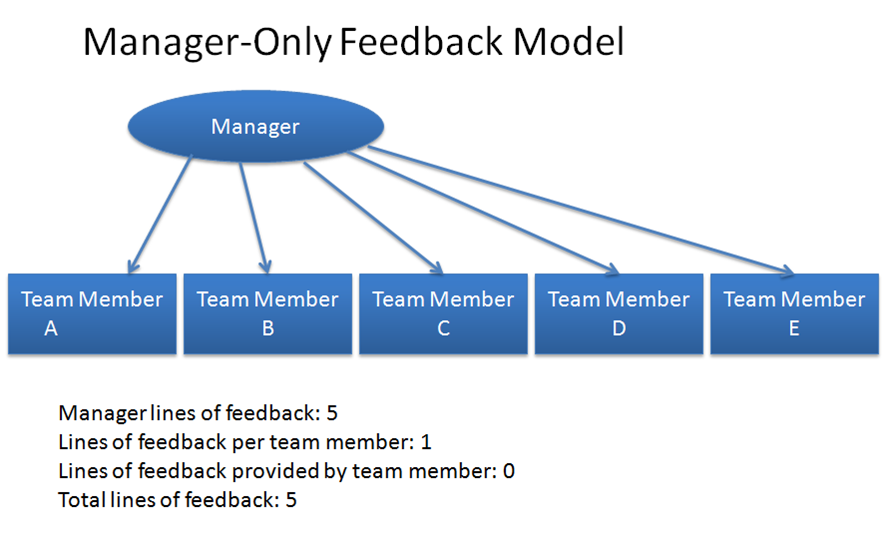An opportunity to increase the amount of performance feedback on your team
Peer feedback is frequently given via indirect surveys, perhaps as part of a 360-degree feedback program. I would like to argue that this doesn’t really count as peer feedback, since it is time-delayed, indirect, and frequently non-actionable. I’m more in favor of direct peer feedback, since it is specific and immediate, can be focused on improving performance and teamwork. However, there are some reasons to be wary direct peer feedback, as I detail in my previous post.
However, the main reason I’m in favor of direct peer feedback is that it multiplies the amount of performance feedback that team members receive. Let me explain:
A traditional model for how employees improve their performance is through manager observation, and then the manager provides coaching and corrective feedback. For a team of five people, this is what it looks like:
Look familiar? This is the popular conception for how employees receive feedback on their performance. It is predicated on the belief that the manager has enough expertise in all the areas of the team performance to provide feedback, and the manager actually has the skill to provide feedback, which, alas, is not always the case. When most of us start a job, this is the general mental model that we have. After all, the manager is the one who evaluates our performance, and knows the expectations for performance! Employees expect to receive feedback from the manager on performance.
